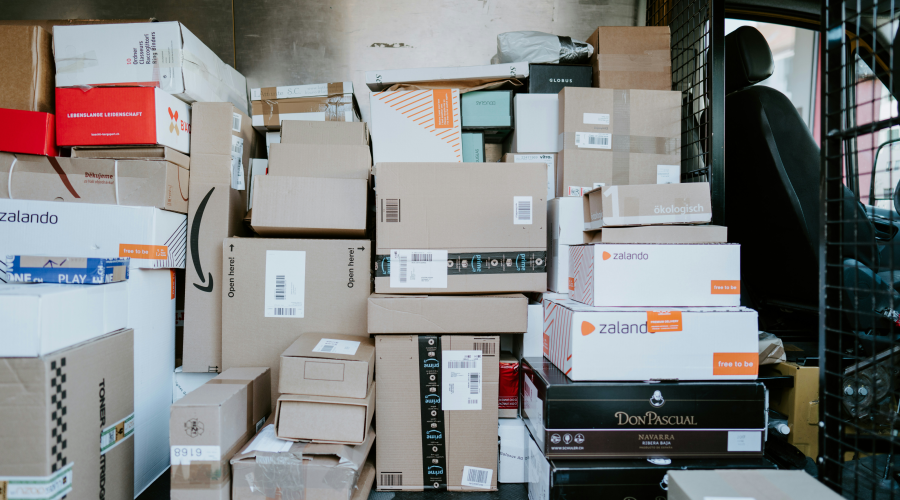When you think of starting an e-commerce business or learning the best shipping practices, it begs a lot of questions. In a time when a lot of things have gone digital, e-commerce has made it possible to purchase items just with a few clicks on your device.
It is possible to have a good product with poor sales due to your choice of shipping practices and policies. Also, your shipping policies and practices could attract more buyers to your product.
In this article, we will answer exhaustive questions that pop up at the thought of e-commerce shipping practices.
How do I ship an e-commerce product?
There is no fixed way when it comes to shipping an e-commerce product. Some factors determine how you ship an e-commerce product. These factors are:
- Size and weight of the product
- Destination
- Shipping options available
Once sales are made online, considerations in line with the aforementioned are made. These considerations help to determine the shipping carrier to be used and the cost of shipping.
Product size and weight also influence the choice of carrier to be used. Taking note of the shipping destination is an important step to take as well.
After these considerations are made, unique choices tied to the nature of the product and its destination are made. Afterwards, they are sent using the appropriate carrier.
How does e-commerce shipping work?
E-commerce shipping works in varying ways depending on the backend systems adopted by a company involved in e-commerce. We will outline the general method briefly.
- A printout of the order is obtained from the backend of a system.
- Purchased items are collected and packaged in bundles.
- Thorough checking is done to make sure nothing is missing from the shipment.
- A despatch slip containing the address of the consignee and the bill of the goods are packaged alongside the purchased item.
- The goods are then handed over to a courier partner. The customer is notified about the status of the shipped goods. A tracking number is also given to the customer.
- The tracking number is sent through a logistics partner 24 hours after the goods have been shipped.
- On delivery of the order, a file capturing details of order completion is received by the customer from the courier partner.
- When a delivery is not received, the package can be tracked on behalf of the customer using the tracking number.
How do you determine shipping costs online?
Shipping is a very vital part of any online business. Customer satisfaction thrives on receiving their product on time and without any damage.
Your ability to make a profit is tied to knowing how to factor in the shipping cost of an order in a way that your customers don’t pay through their nose. A lot of factors are considered in the determination of shipping costs. They are:
- Courier choice
- Packaging materials and size and weight of the package
- Origin and destination
- Customs or duties, if they apply
- Tracking needs
- Insurance
- Speed of delivery
This means that for you to determine the shipping cost of a 50-pound package, you would have to factor in how quickly you need it delivered, the cost of delivery from the origin to destination, insurance cost and the type of packaging you desire. You might need to add handling costs like warehouse costs, to get a detailed picture of the shipping cost.
When these factors have been considered, a shipping calculator can help you to accurately determine the shipping cost. There are shipping calculators available online.
You can also develop a shipping calculator tailored to meet your considerations by using Excel or Google Sheets. When this is done, you can enter details obtained from the website of the courier service you choose to use.
How do I get the best shipping rate for my small business?
Small businesses need to adopt a cost-friendly shipping rate so that they can draw customers to themselves and grow their businesses to become household names.
There are several ways to make sure you get the best shipping rate, at least one that will not be a reason for your customer to pay through their nose. Here are some suggestions you might want to buy.
- Research different couriers
Doing research on different couriers and finding out their shipping rates gives you room to negotiate with any of them for a package that is most convenient for your business. You can as well agree on a contracted discount or adopt a hybrid shipping strategy.
- Automate your shipping
This not only saves you time but also saves you money as well. With this approach, there is a guarantee for the best rate and you will need less manpower.
- Offer free Shipping
This might not sound like a good suggestion since we are considering getting the best rate for shipping but this is also a way to set your small business up for success. One way to offer free shipping is by attaching it to a fixed minimum order. So any purchase made up to that benchmark gets free shipping.
- Set an MOQ
Ever been on an online e-commerce store and tried to purchase a product only to realise that you can only purchase a specific number of the product? Usually more than one. That’s called an MOQ. MOQs are used by e-commerce stores to save on production and shipping costs.
Some items are just not worth shipping one at a time. Using MOQs will make shipping cheaper because you ship out more items on a single sale.
- Adopt flat-rate shipping
Flat rate shipping is a good way to get the best shipping rate since it would save you the cruelty of an order containing one product costing the same as one containing five products.
How can I ship for free?
At the mention of free shipping, one might think that it harms the business that offers such. Free shipping is a bait you can use to draw more customers to your business. There are ways to ship for free without getting out of business after a while of doing so.
There are two basic approaches to offering free shipping: Conditional or unconditional, they are both self-explanatory. While conditional free shipping is tied to factors like minimum order, selected items and economy delivery, unconditional free shipping applies to every order placed.
When you sell high-margin products that are easy to ship, you can secure a competitive advantage over your competitors by offering free shipping. This way, you will not be worried about running your business down.
A slow, low-cost shipping option helps you lose less money on free shipping. When you want to ship products for free to your customer, subscribe to a slow delivery option. Although this might not be good for a delivery needed urgently, it would be restricted to orders with no deadlines attached. Those who need speedy delivery might not want to subscribe to this.
What is the best shipping method?
The choice of a shipping method is tied to the customer’s preference, pocket size and anticipated delivery time. However, some shipping method leaves a customer with no choice but to subscribe to them even when they need those products urgently.
The only thing that can be done in a case like this is that they place their order on time, then sit back and wait for the next century for their delivery to come.
Shipping methods depend on some factors. They are:
- Kind of goods
- Weight of goods
- Volume of goods
- Destination
- Delivery time
There are three shipping methods known. They are
- Courier shipping method
- Air shipping method
- Sea shipping method
These three methods are best depending on the nature of the goods to be shipped. For goods that weigh less than 100 kilograms, the courier method is most preferred. It is fast and also cost-effective. For goods that weigh between 100 and 800 kilograms, it is best shipped by air. This can take a few days for it to be delivered.
For bulk-volume goods, sea shipping is ideal. This method does not require shipping time as it might take a long while for it to be delivered.
Since each Shipping method captured above has its specific purpose to serve, one cannot point to one as better than the other. In their uniqueness and peculiarities, they are best for the purpose it was designed for.
Conclusion
In any business, it matters what your customers think and how they rate your services. No matter how well you do, some of them will still not be satisfied with your services.
Although you might not be able to satisfy all your customers, you can make sure that a greater percentage of them are satisfied. Stick to the best shipping practices and what you do will draw more sales to you.Looking to improve your e-commerce shipping? Speak with an expert today!

